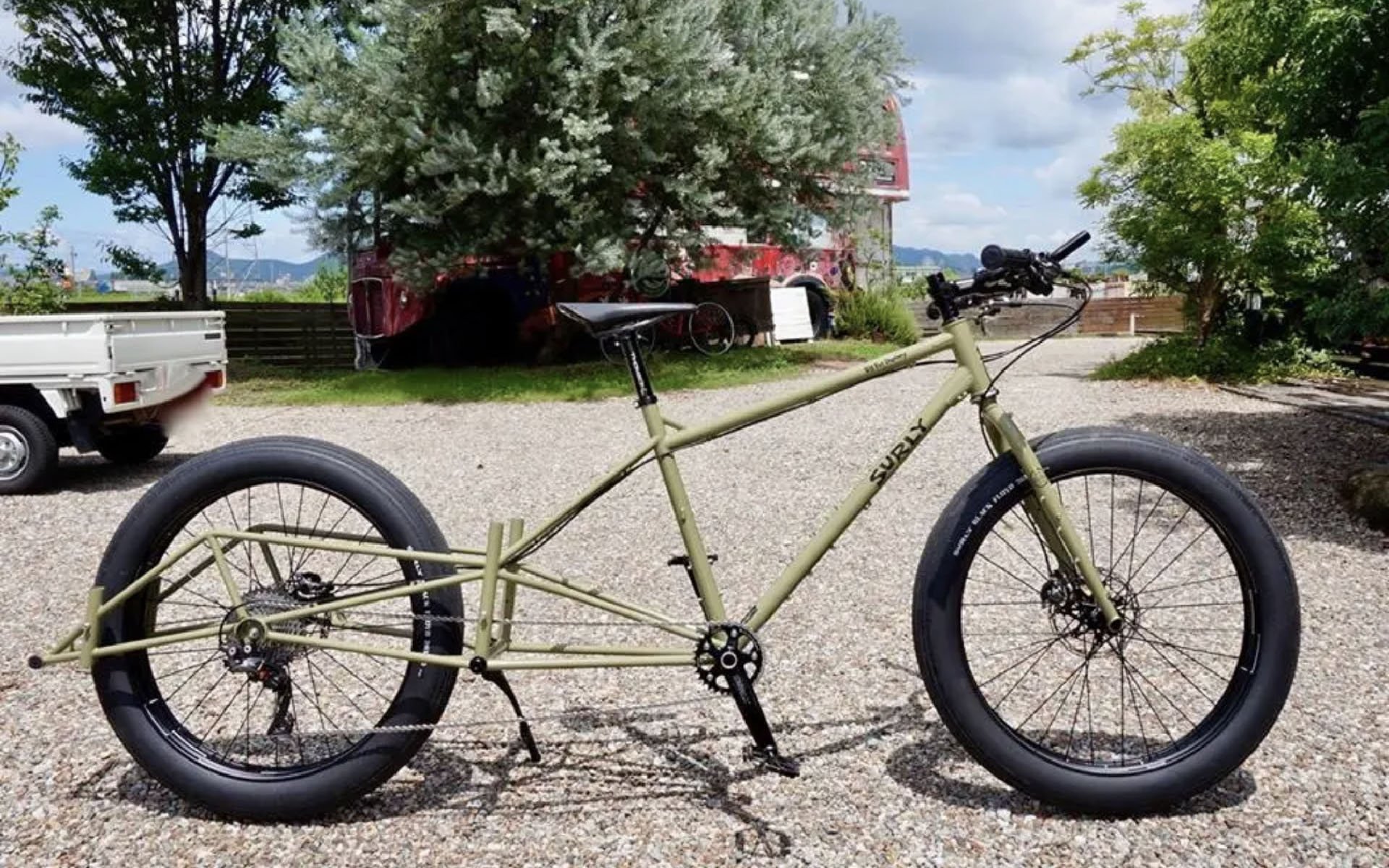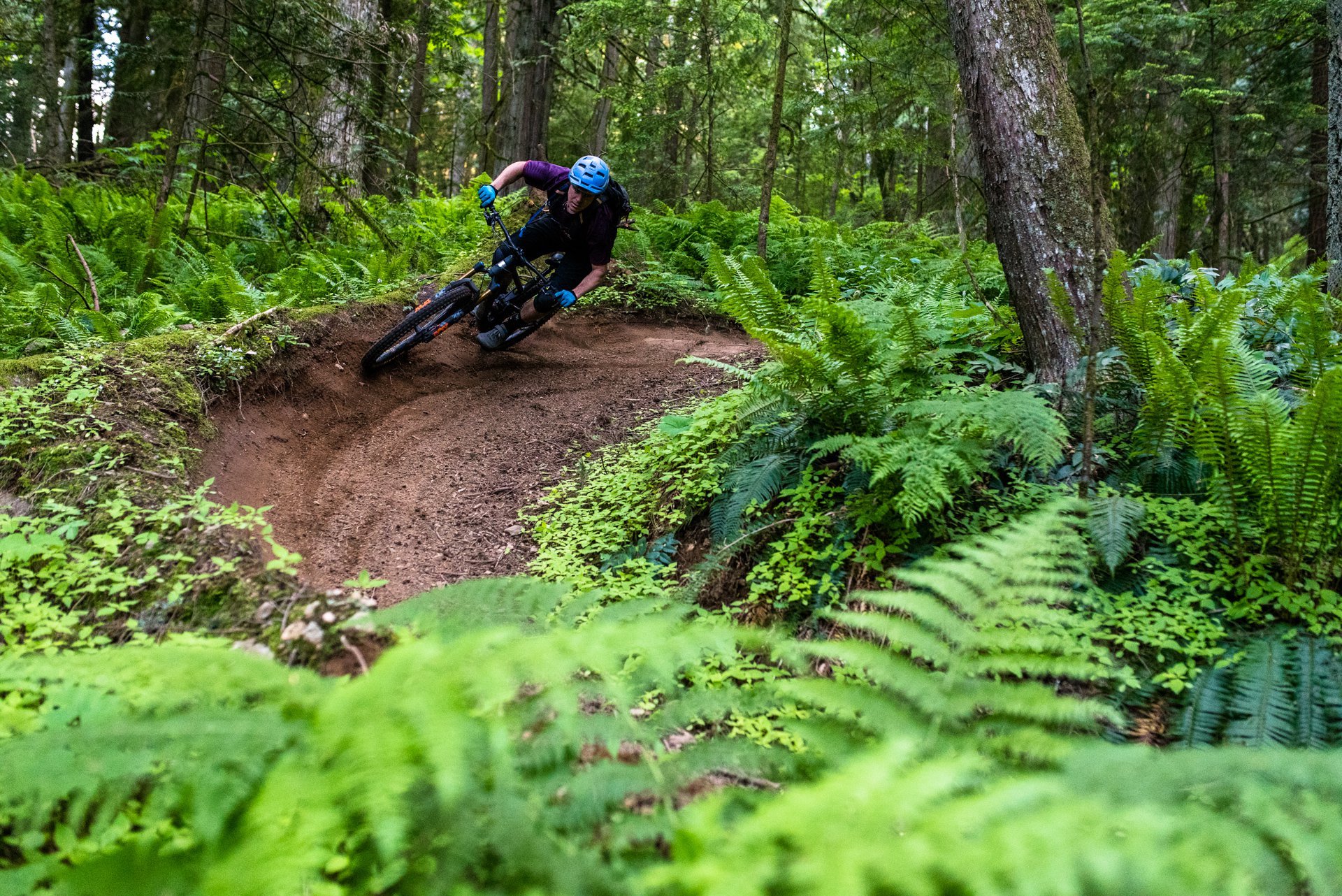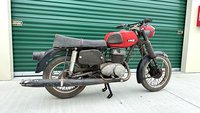
Ask Uncle Dave
Dear Uncle Dave: Why aren't my chainstays longer?
Dear NSMBers:
The idea that it’s ideal to have a constant rear center across a whole size range is patently absurd. It also seems absurd that a $3,000ish frame would not have the ideal rear center.
Fortunately, more and more of the new bikes have varying the rear center across sizes. I haven’t built a spreadsheet, but the variation from small to XL seems awfully small. Thinking it might be worth an article. I know I’d be very curious to hear NSMB’s take.
What do the brands seem to be doing and how do the changes relate to the changes in front center on a percentage basis? Is that what the designers really think is best? Or, are the small not shorter because they can’t make them shorter (i.e. maybe the smalls should be 27.5)? Are the XL’s not longer because they are scared the market won’t accept them? Is the small range across sizes simply because they are not actually making different rear triangles but somehow creating some rear center variation with the linkage? Would a bigger range mean they needed to design different suspension kinematics across the sizes as well, which would add even more cost?
Sincerely,
Cheering for Different Chainstays
(Cover photo courtesy: wakka-bicycle.com)
Dear CDC:
I often wonder what regular people would think if they knew the sorts of topics that cyclists got excited about. The way we go on about chainstay length and handlebar width we’re like kids huddled around in the locker room, whispering about the fuel economy of the latest compact sedans. This question made its way into the NSMB group Whatsapp chat, and the lid blew off. Christmas for bike nerds. I managed to kill the conversation by suggesting everybody formally participate in answering this question. It’s fascinating how often I’m able to bring a robust conversation to a crashing halt.
I’m also surprised by the way that these conversations about things like chainstay length and bar widths can swing, with absolute certainty, from year to year. Wild reactions are followed by even wilder swings back in the opposite direction. Watch a video from 10 years ago; it looks like riders stole the handlebar off a toddlers push bike, and stole their geometry from a late 90’s XC race. It’s not that long ago that most arguments about chainstays were about whether or not they were short enough. It’s not that nobody was pushing for longer chainstays, but the contrarian position tended to be a push for a few extra mm over the absolute minimum. We were certain, but we were wrong.
We also seem to have some sort of certainty that a model of bike rides the same throughout the size range, and no matter the height of the rider. It’s not unusual for a reviewer to meddle with sizes and to speak of the vast difference in handling, but we haven’t quite made the leap to extend that thinking to how a particular model might work for riders of different sizes. Digging in to such things might go some of the way to explaining why one review is glowing while another is not.
So, it’s fabulous that chainstay length has now entered the zeitgeist, but the conversation still lacks focus. Look at the companies that are playing around with size specific geometry (hat tip to Tim Coleman for summarizing this one). (Generally speaking) you’ve got (ignoring what is going on with the new Range) Norco adding 5mm as they go up a size (by moving pivot locations). Santa Cruz is moving pivot locations, but has some ranges in their jumps. Transition shares sizes between S/M, then jumps up 6mm to another shared size for L/XL (by using a different sized rear end). And then, with the aim of keeping the front/rear center ratio constant, Forbidden is jumping 14mm with each size (by moving pivot locations)! Combine that with all the other companies that do nothing, and it would be fair to say that there isn’t much of a consensus on something as basic as where one should be located relative to the two wheels on the bicycle.
With such drastic interpretations on a topic, it feels like we need to take a step back before we get too deep. A fair first question might be “what happens to a bicycle when you lengthen the chainstay?” For me, this starts with a discussion about weight distribution (which is not a simple topic). I started thinking about it seriously over the past year or two for a variety of reasons:
1 – I tend to run my rear ends a bit stiffer than recommended. I tend to run my forks at recommended, or sometimes even a bit softer. I wondered if height played into this.
2 – Cam keeps preaching the gospel of “getting centered.” He talks about riding with a more centered position a lot, as well (zing!). Again, I started to wonder if this was an easy thing for a guy with long legs and a shorter torso to say.
I’m not going to share the numbers here, because the thought of publishing an Excel sheet for everybody to pick over frightens the hell out of me, but I built a model to look at changes to weight distribution based on bike size. Assuming similar body proportions and everything else being equal (namely, the percentage of weight on the hands and feet), I proved to myself these fundamental rules of weight distribution.
1 – Shorter reach puts more weight on the front wheel compared to longer reach.
2 – As you increase stack, your hands move backwards relative to the front wheel, and less weight is placed on the front wheel. A rider on an XL frame with a 50mm stem will have his hands much, much further behind the front axle than the equivalent rider on a medium frame with the same sized stem.
3 – Longer chainstays place more weight on the front wheel compared to shorter chainstays.
4 – The further back your weight is on the bike, the larger the gap in weight distribution between sizes. Leaning forward there is much less of a difference than when you’re hanging off the back of the bike.
Combine this all together, and what it results in is a fair amount less weight on the front wheel for a similarly proportioned rider on an XL compared to his shorter friend on a Medium, across most situations. It also starts to explain why I need to run my rear shock a bit stiffer than a shorter rider, as I am both a) able to much more easily get further off the back due to my long legs and b) a larger percentage of weight moves to the rear when I do so. This all creates a really compelling argument for proportionally longer chainstays on larger bikes, and companies that do so are able to narrow this weight distribution gap. It also suggests that there are other parts of our bikes where it doesn’t make all that much sense that we’re all running the same length (I’m looking at you, stems).
But none of this really tells us all that much about how a bike is going to ride. If I enter a turn on a medium bike with 39.5% of my weight on the front wheel of my Medium bike, what difference will there be to the tall guy who follows me with the exact same technique but can only manage 38.1%? And how much of a change will he see if he can cut that gap in half? And what happens when he climbs a hill? There’s a whole other conversation that needs to be had about how the difference in effective seat tube vs. actual seat tube angles impacts taller riders far more than shorter riders.*
We also need to consider the changes to the bike as we start messing around with pivot locations, or changing the lengths of suspension members. It’s fairly obvious that if you throw a longer chainstay and seatstay on but keep your pivots the same, you’re going to impact the amount of travel and the leverage curves. It’s a bit less obvious what happens as you shift your pivots relative to your bottom bracket. The suspension may still move the same, but the relationship to your bottom bracket is different, which has an impact on how the bike pedals, and even on how the wheel is travelling (relative to the rider, that is). Put this all together, and you understand why a lot of companies are happy to pick one chainstay size and stay the course.
This felt like a pretty good time to reach out to some bike manufacturers and see what they had to say on the topic. Santa Cruz was where I started. They’re not generally the first to experiment with geometry, but they’re never the last. Once they start down a road, there’s a pretty good chance it’s a thing. I reached out to Senior Product Manager Josh Kissner to see what he could tell me about Santa Cruz and chainstay lengths. Here is what he had to say.
Josh - I will start with this caveat: Who the hell knows! Ha. On any given bike, there will be people who think the CS are too long and also people the same height who think they are too short. It is very much preference and terrain dependent- there's no objectively correct chainstay length. Also- none of us know what it's like to be a different height. We know what it feels like to be 5'9" or 6'2" or whatever, but have to rely on other people's feedback to try and understand what they are feeling. This makes it a very unscientific process and a difficult one to "test". That said- we do debate it quite a bit.
Somebody has obviously never seen Gattaca!

Josh Kissner riding the Bronson V.3 at Vedder mountain pre-COVID in 2018. Photo - Dave Smith
Question #1 - How is Santa Cruz sizing up chainstays as sizes change? Is it pivot/bb location changes? Different rear triangles? Something else?
Josh - We do it by moving the pivots/shock mount on the front triangle. It's MUCH easier to do this on carbon bikes since the FT tools are all unique anyway, vs trying to make different forgings etc. Still adds challenge and work to the engineering process, but it's relatively simple after they're designed.
Question #2 - Why do it? What's the end change to the handling of the bike that one experiences with longer chainstays on larger bikes. I mean, we went this long without worrying too much about it. There must be some tangible change to the handling that is achieved.
Josh - The #1 thing I think about with CS length is the wheelieability of the bike (aka the amount of weight on the front wheel), for better and worse. Sometimes it's totally awesome to pop the front wheel up and over something (encountering a wet diagonal root in the fall line), and sometimes it's not (climbing, flat corners).
The #2 attribute is just the total length of the bike and the stability thereof. When smashing through chundery junk, a long bike feels amazing. The bike is way less sensitive to body position/weight shifts and is just generally more confidence inspiring. However, when slithering through tight corners or trying to make quicker movements, it can feel awkward or difficult with a really long bike.
#1 and #2 are highly preference based, but it's tough to argue with the theory that a taller person needs a longer chainstay to get a given wheeliability or wheelbase stability. Our goal is to pick a bike's character and try to get everyone the same feeling.
Question #3 - How did you get to the jumps that you did? Looking at the new Bronson, there's some 4mm jumps, some 3mm jumps and a 5mm jump. I guess this seems a bit less arbitrary than flat 5mm jumps, but there must be some science buried in there somewhere, right?
Josh - Definitely the subject of much debate. The different jumps in our CS length on the Bronson reflect the different jumps in the reaches between sizes. So if there's a 25mm gap between reaches, we do a 4mm CS jump. Between M&L we have a 20mm gap in reach to more precisely fit people in the thick part of the height bell curve. There we did a 3mm jump, as the difference in rider heights will be smaller between those two sizes.
We've looked at making the jumps so the FC/RC ratio remains constant. However you end up with some pretty wacky numbers if you do that- particularly at the extreme ends of the size spectrum, so you end up moderating them until they seem reasonable. And at that point, I think you're accepting that a constant ratio up the size-run is not the right metric. It is certainly a reasonable theory but not mine. In my conversations with tall people, none of them are asking for the length of chainstay necessary for this. At the other end of the spectrum, I don’t think short riders need a crazy short chainstay, either.
What we do is take feedback from riders of different heights and try to come up with some jumps. I'm 5'10" and will come up with my preferred length on a given platform through testing with dropout chips. We have other testers that are taller and shorter. We have people that have been riding our bikes with dropout flipchips for some time and giving us feedback on the various positions. We take this info into account and make our best guesses, honestly. Again- it's preference. There's no "correct" chainstay length for a size large or whatever. It's tradeoffs and opinions. There are also practical constraints that come into play. In some products, we can only go so short without interference of some kind. In this case you may see multiple sizes with the same CS length.
Question # 4 - Is there a better way? If time, money and resources weren't a concern, would you go about doing this differently? What are some of the intangible constraints that put Santa Cruz on this particular path?
Josh - Hmmm. Well if money and resources weren't a concern, we'd probably make a bunch of swingarms with different chainstay lengths so everyone could pick exactly what they want. That's not reasonable, so we've used flip-chips on some of our bikes to offer some adjustability. The problem with those are fiddly bits and bobs and a general coarseness to the adjustment. The way we're doing it on our latest bikes allows us to pick exactly the CS length we want- to the millimeter, without any extraneous parts and accessories. I think it's the best reasonable way.
This article is already tremendously long, but I reached out to Norco, as well, to get another perspective on this situation. Of the larger brands, Norco has been very progressive with geometry, and have been putting out some interesting bikes with aggressive angles and size specific geometry. I reached out to Engineering Manager, David Cox, for his perspective on this.
Question #1 - From my experience with the Shore, I assume you're accomplishing your rear centre changes the same way with your other bikes - that is moving the pivot locations relative to the bb. If not, feel free to correct me on that. It also seems like most of the other bikes are seeing a similar 5mm jump in length with each size increase. How did you make the decision that a consistent 5mm jump was the right way to go? Why not smaller/larger?
David - Yeah exactly right, we move the bottom bracket relative to the suspension pivot locations. Not many other brands even have different rear centres for different frame sizes. However, the few that do, generally achieve it by physically changing the length of the chainstay or seatstay (or both) weldments, or by using a small flip chip in the dropout. By doing this, their leverage curves will get translated up or down, to an extent that would likely require a shock re-tune. The way that we do it, by moving the bb relative to the suspension pivots, means a consistent leverage curve for all frame sizes that we match our custom shock damper tunes to.
On Shore we use 5mm jumps in rear centre between each frame size, but some of our other bikes use different jumps. Determining the jumps for each platform is part of our holistic approach to bike design that we call “Ride Aligned”: Considering how fit, geometry and kinematics interact, whilst considering the bikes intended use and ride feel we want to achieve. We use anthropometric (human measurement) data to calculate where the rider’s centre of gravity is on each frame size. This allows us to calculate the bike/rider systems weight distribution at the contact patch (where the tires meet the dirt). Through testing we validate the weight distribution and apply this across all frame sizes, so riders of different heights on their respective frame sizes all have a consistent weight distribution. We address differences in rider morphology (body shape), sex, skill and body position in bike cockpit and suspension setup through the “Ride Aligned Bike Setup Guide”, to ensure all riders experience the bike the way we intended it to ride. Simple, eh?
Question #2 - Why do it? What's the end change to the handling of the bike that one experiences with longer chainstays on larger bikes? I mean, we went this long without worrying too much about it. There must be some tangible change to the handling that is achieved for all of that effort.
David - We’ve been doing “Gravity Tune” for 11 years, originally developed for Aurum back in the dirt Norco days. So we have been worrying about it for a long time… 😉
You can look at it as longer for the bigger sizes, but in reality, most brands are designing around the “large man” and not really optimizing the bikes for people who ride other frame sizes. But we want our bikes to ride well for riders of all standing heights. Chainstay length per frame size especially benefits the more fringe sizes, for the small and tall riders; they experience the optimized “balance” of the bike that the “large man” does. So, the tangible change to handling would improve grip, agility, stability, confidence, reduce rider fatigue … all of that good stuff.
3 - Is there a better way? If time, money and resources weren't a concern, would you go about doing this differently? What are some of the intangible constraints that put Norco on this particular path?
David - The way we do it by moving in the BB relative to the suspension points is the best way to do it. However, for bikes like Range where one of the pivots rotates concentrically to the BB, we cannot use this method. So we have a different way…
For Range, we change rear centre length with bolt on dropouts. Without correction, this would change leverage for each frame size. However, we correct for this in the link arm, and each frame size has a link arm with slightly different pivot positions, allowing us to maintain the same leverage curve for all frame sizes, which is imperative when developing a shock tune to match the leverage of the bike. These size specific link arms certainly add design complexity, but the result gives consistent ride feel across all frame sizes.
So, this is two companies commenting on why they bother with size specific geometry and rear centres, and perhaps a brief glimpse into the future of what might happen with size specific bike design. It will be interesting to see how companies respond to bikes that are taking a different path (the new Norco Range with its size specific angles, and the new Dreadnought with its extreme take on size specific geometry). Heck, it will be interesting to see what reviewers think of these bikes and if it is swayed one way or another by rider size. Will this lead to a(nother) revolution in geometry, or will most companies continue to tiptoe in? Interesting times, for sure, especially for us taller riders.
Sorry,
Uncle Dave
*I think I might have a solution to this. Maybe somebody has done this already? Anyhow. We have reach. We have stack. And then we have the wild west of seat tube angles. What if we came up with a sort of “negative reach” measurement at different heights, rather than seat tube angles? That is at X height, the center of the top of your seatpost will be X mm behind the bottom bracket? This really gets rid of all of this dual seat angle nonsense and would start to show how much this might change depending on what height you are.
We may have a prize, but I'm not sure (sort!) but we'll let you know either way. Send us an email and we'll let you know. Also, if you have a question for Uncle Dave, even a terrible one (for shits and giggles) let him know.
Uncle Dave's Music Club
I think it is fascinating to begin to understand the contributions of each member to a band. You often can’t begin to understand until the band blows itself apart and members head in their various directions. For example, there was some sort of alchemy to the Unicorns that was never re-captured when the members moved in their own directions. Alden needed his weirdness kept in check and Nick seemed to benefit from the inspiration.
Similarly, Wolf Parade kind of sucked once Hadji left. I never thought he contributed all that much, but the quality before he left was on a different level then after.
The most interesting one though has to be Frank Black and the Pixies. It’s fair to say that Frank Black seemed to receive the lion’s share of credit for any Pixies success. Kim Deal got a bit of credit in hindsight, but David Lovering and Joey Santiago are relatively un-credited. Frank Black’s solo output (and recent Kim Deal-less Pixies…ummm…music) point to the original band being far greater than the sum of its parts.
Still, as far as Frank Black is concerned, I still get some pleasure from Teenager of the Year. I think part of it has to do with me having it on heavy rotation one time that I was busy re-reading the Hitchhikers Guide to the Galaxy series. This combination seemed to really work. They’re both a bit weird, and a bit spacey (somehow).
Headache – This has to be Frank at his poppiest. I kind of love it. So much polish. So much melody. Still weird.
Thalassocracy – Like, how is this on the same album as “Headache”? This reminds me of the tear-the-doors off Pixies moments. It could go a tiny bit further in that direction, but I’ll take it. It’s like Frank took influence from the grunge that he influenced.
Hostess with the Mostest – So wonderfully weird! Yet poppy! I always imagine this song playing in the background while a cow explains his best cut of beef to me. That could, quite literally, be the hostess with the mostest.
Superabound – If there was ever a Pixies song as a Frank Black solo object, this is it. The slow build to a small explosion is so great.
There’s a few other great songs on this album. Everything else is pretty solid. At the end of the day, it leaves me with a bit of a Trompe Le Monde feel. God, I wish he could have kept going like this.











Comments
fartymarty
2 years, 9 months ago
Or you could just buy a Geometron / Nicolai and mess around with your geometry till the cows come home....
Reply
Lu Kz
2 years, 9 months ago
And then after you can mess around with your geometry with the cows.
Reply
Vik Banerjee
2 years, 9 months ago
As a rider of large size frames that prefers shorter CS lengths I like the frames with flip chips, sliding dropouts or other user swappable methods for adjusting CS lengths. I also don't mind buying a frame only if you let me mix and match front and rear triangles....assuming the design in question allows for that.
Reply
Cr4w
2 years, 9 months ago
I don't see why flip chips aren't more widely used. You could have multiple chips to give 2/3/4 length options on the same swingarm without changing pivot positions. There's plenty of reasons for riders of any height to want to be able to vary CS length.
Reply
kcy4130
2 years, 9 months ago
One of the reasons why some manufacturers shy away from cs chips or change able bolt on dropouts with different lengths (like Banshee does, but with multiple lengths), is that by altering axle location relative to the rear triangle it move where the force is applied. This changes how strong and stiff it is. Think of a simple hardtail, the rear triangle will be strongest and stiffest with the axle is located at the intersection of the cs and seat stay. Move the axle back by 10 or 15 mm and now there's a moment being applied to the cs and ss rather than pure tension/compression. It means things have to get heavier, which is fine with many, but it also wreaks havoc with "tune-able stiffness" and increases the FEA work involved.
Edit: but for the record I do like adjustability in theory, just saying it does have some downsides, and is difficult to implement well.
Reply
Cr4w
2 years, 9 months ago
In theory yeah but I wonder if those are things people would actually notice. Think of all the people who buy expensive shock upgrades but don't properly tune or service their suspension parts.
Reply
kcy4130
2 years, 9 months ago
Yeah, not sure I'd be able to perceive a 3 or 4mm difference in cs length. But my point was that multi position cs make the engineers job harder. Makes designing a bike take longer, essentially to do it right they'd need to run every FEA loading scenario for each chip position. Time=money. Also good FEA software is expensive, I'm guessing lots of the smaller companies don't own it, only rent the software licence by the hour.
Reply
Cr4w
2 years, 9 months ago
Ah yes. Companies that want to charge CAD$5000+ for a bike frame can't justify doing it the right way. [sadface]
How much exactly do we have to pay for the job done right? $10000? These frames are priced to include basic considerations like being moderately adjustable and at minimum fit the intended riders for a given frame size.
Reply
Cooper Quinn
2 years, 9 months ago
But doing it this way changes bike travel and leverage ratios, and can tweak other kinematic factors.
Reply
ackshunW
2 years, 9 months ago
Great article! While I used to be a short-chain stay snob (trail hardtail with sub-400mm stays— maneuverability, man!!!), I found on my new-to-me bike that stays circa 40mm longer did not affect wheelies and bunny hops nearly as much as my indoctrinated self would have believed.
But like the SC guy, I balk when people talk about making all sizes “ride the same”. A 5’ person’s relationship to the bike is going be be totally different than a 6’-6” person, no matter what the chainstays are doing. Everyone’s already adapted to the way their size interacts with all sorts of things in the world, bikes included.
To put it another way—- ultimate similarity would be achieved by reducing / increasing wheel size, frame tube diameters, etc., etc., right? But then the 5’ person bike has a super short wheelbase and tiny wheels which approach the terrain of the trail in a completely different way than the 6’-6” bike.
I also think options/ adjustability is better than size-specific
Reply
kcy4130
2 years, 9 months ago
Well, to fully optimize bikes the leverage ratio and shock tune would need to be size specific too. Also the radius of every corner, curvature of every jump, and exact spacing of each rock in a rock garden on a given trail will also need to be optimized for a specific size of rider and wheelbase of bike in order for each size rider to have the same experience... I guess my point is that optimization is one hell of a rabbit hole.
Reply
kcy4130
2 years, 9 months ago
I don't mean to mock this at all, just saying it can be taken way too seriously by some people. I'm glad brands are getting this refined. I'm also very glad I don't design bikes. Thanks Dave, I've been enjoying your articles for years.
Reply
Cooper Quinn
2 years, 9 months ago
There's definitely some brands thinking about this. The current Altitude is designed around a shorter stroke length shock for the XS - increasing the leverage ratio and hopefully small bump etc for lighter riders.
I'd guess that's not the only example, but its the only one I know.
Reply
Sun Hester
2 years, 9 months ago
Fun topic.
As much as I enjoyed my previous bike, a Foxy Mondraker, I began to REALLY notice the lack of front wheel traction and the additional work it took to keep the front end hooked up. And I decided, right or wrong, that it must have been caused by the long 490mm Reach (finally a bike that fits!) combined with the short 435mm chainstays. Hen I shopped for a replacement bike specifically to change that aspect and found success, and consistently faster rides, going to an S5 SJ Evo with 448mm chainstays.
It's still a confusing topic for me and there is no such thing as the perfect chainstay length (consider the wildly different body weight distribution between a female and a male for example; or the different weight distribution based on STA & seat height alone) but longer than typical for a size large bike is much closer imo.
BTW I did try the even longer chainstay length adjustment on my Evo but just couldn't quite get on with it. My shock seemed harsh when sag was set correctly & rear traction suffered.
Why does an adjustment in chainstay length through adjustable dropouts negatively effect leverage ratio? Can't you just increase spring pressure and end up at the same place?
Reply
Cooper Quinn
2 years, 9 months ago
Re: your last point.
No, you've changed the length of the lever arm, so the actual ratio is different. eg if you increase your chainstay length, increasing the spring rate doesn't change the leverage ratio back, your shock is just experiencing more squish now, and you need the extra spring rate to get you back to appropriate sag, etc.
Reply
peterk
2 years, 9 months ago
The absurd part of the question is thinking that spending $3000 (assuming $CAD?) is enough for a manufacturer to consider different chainstay lengths given current prices. Try $4000+
Reply
MuscogeeMasher
2 years, 9 months ago
$3,000 US
Reply
mrbrett
2 years, 9 months ago
I don’t need to worry about this, I’m a statistically very average height (for a mountain biker) at 5’ 11” and lucky me - I get bikes that always feel well sorted out!
Selling bikes that were XS or XXL for years, I couldn’t help but note the balance felt pretty off. Was always a rough start to a conversation with a customer to say “unfortunately you’re short/tall, so we have limited options here …” As we talk about encouraging more diversity in biking we will need bikes that fit more people.
Reply
Humanpowered
2 years, 9 months ago
I would love to see the spreadsheet. If you link it I might be able to build out a quick app that would allow anyone to enter their setup and see the resulting weight distribution.
Reply
kcy4130
2 years, 9 months ago
I think it might be easier and more accurate to simply use a bathroom scale under a tire in ones normal riding position.
Reply
Humanpowered
2 years, 9 months ago
It would also allow you to see what would happen to your weight distribution with alternate setups.
Reply
Dave Tolnai
2 years, 8 months ago
This comment has been removed.
Dave Tolnai
2 years, 8 months ago
Yes. For sure. The spreadsheet was more to show me how things changed as parts lengthened or shortened. It would take too much speculation to bring that to the real world, but it was a great exercise to better understand the impacts of certain things.
Reply
Dave Tolnai
2 years, 8 months ago
The problem is that I wouldn’t release it into the wild without somebody checking the math. The number of people that I would both trust to get that right and that would know what the hell I was talking about is very small. Throw in the torture of wading through somebody’s excel formulas...I don’t think I could do that to somebody.
Reply
Sean Doyle
2 years, 9 months ago
Weight balance is the optimum goal. As mentioned a lot personal preference, terrain, style of riding, kinematics all play z oart in determining whats going to work best. There definitely needs to be some small adjustments available for production frames.
Here at Devlin Custom we've gone for longer front centers with 35mm stems, 77 deg seat angle for a 760mm seat height, and 440mm chainstay. Thats fir a 178cm (5'10") rider with long legs. Bottom bracket height has a part to play as well. Too low and the bike will feel too locked into the wheelbase and change of direction is harder. To high and it becomes flighty and move around off line too easy. Its a holistic approach. Custom frames can account for that. We have produced a very stable bike at speed through the rough but still gets around the tighter corners nicely. Heaps of grip and feedback. 1240mm wheelbase is a bit harder with the super tight switchbacks but they arent common on the local trails.
Reply
blackhat
2 years, 9 months ago
Are all of these pivot changes made at the molded attachment point to the front triangle, or are some of these moving the pivot via the linkage hardware geometry?
It would be cool if there was a way for the end user to adjust chainstay length independent of suspension by buying a different size’s linkage. Or in the case of the flip chip/shock tune approach if you could buy the chip and shim stack as a kit. So much more useful than a high/low flip chip. Alas, I doubt it will play out that way.
Reply
cxfahrer
2 years, 9 months ago
Personally as a 6'7" guy I think there are good reasons for me riding on extra short 27.5 chainstays and for extra long ones on a 29 XXL super enduro too. You need to have one bike for flicking around corners and one for hammering the straight line. And the N+1 anyways.
Bicycles are always kind of too small for me, but if they get longer, they feel too big. I reckon this is because trails are made for the average people, hiking paths or black lines. And the trees hang too low.
I am quite happy too to have left the 90's nagging melodies (not only Frank Black, also Smashing Pumpkins and the like) far behind, although I must admit to become hooked again now and then.
Reply
Cr4w
2 years, 9 months ago
I test rode an early Norco Aurum mule that was built to the same idealized ratio of WB/CS:rider height they used for their M and L frames. It was a massive XL compared to the bike I was riding at the time though it felt very balanced to me. I don't have numbers but I bet it was the same as my current Geometron G1 XL.
My question: do you think some of these new longer bikes feel too big to someone your size because you've been riding incorrectly proportioned bikes for so long that riding one that fits correctly just feels off? i.e. you've been institutionalized to bad fit? And also consider that many trails are engineered for those shorter bikes (berm arcs, tight corners, etc) so even a bike that fits well will require a new handling of those situations.
Reply
AJ Barlas
2 years, 9 months ago
I reckon you just nailed it, Craw. Add to that having to make fairly significant adjustments to riding style and even the previously engrained setup process and it can all feel horrible at first. Once through that, there’s no turning back ime.
Reply
MuscogeeMasher
2 years, 9 months ago
FWIW, I’ve got a original Hightower XL with a 150 fork and an XL Titan with a 170 fork. HT is 470/435 and Titan is 495/452. When you measure the front centers and do the math, front center on HT is 64.25% of the wheelbase and Titan is 65.33%. Wheelbase on Titan is 87mm longer.
I am not going to claim I am good enough as a rider or knowledgeable enough about bike design to say a lot about that difference in the context of overall design other than
- I really like the HT for sustainable, purpose-built trails on rolling terrain and the Titan for winch and plummet.
- even with the long rear center on the Titan, it’s arguably not as “balanced” as the Hightower (i.e., bikes of 4-5 years ago) based on this one simple metric.
- even so, might want to try 440 on the HT, but no real interest in trying 457 on the Titan. However, wouldn’t consider a bike of the Titan’s ilk with anything under 445.
- much like beer and whiskey, I can tell the difference between the average and good stuff but struggle to articulate it. Still, 5-10mm differences in rear center absolutely noticeable and impactful for above average riders.
- long, low, and slack relatively easy to comprehend. Think the next frontier of geometry/customization going to be a lot more complicated and much harder for the layperson to grasp.
Reply
Hollytron
2 years, 9 months ago
Great read and a Gattaca ref, one of the best 90s movies. I am convinced that the 65% front center and 35% rear center are a good starting place for spliting up a wheelbase.
Reply
Brian Moreaux
2 years, 9 months ago
Dear Dave:
Regarding the Unicorns. I generally agree with you because the Unicorns were so damn cool. BUT! You must have heard Alden Penner’s Clues album? It’s incredible and definitely an evolution. I’d take it over WWCOHWWG any day.
Reply
Dave Tolnai
2 years, 8 months ago
I enjoyed a few Clues songs, but the Unicorns was greater than the sum of its parts.
Reply
fartymarty
2 years, 9 months ago
Dave,
I like your idea of rear reach. Something I was pondering a while ago was % rear offset - horizontal distance from top of seat (at seatpost centre line) to BB (at a seat height typical for the rider size applicable to the frame size) as a % of chainstay length. This takes STA / ESTA out of the equation as it will give an idea of wheelieability as a % across sizes.
This does assume FC / RC is correct (which I see as a fundermental to bike geo).
Reply
DMVancouver
2 years, 9 months ago
I was interested to see Norco removing 0.25 degrees of head angle with each increase in size on the new Range. Although the RC grows slightly with each size, lengthening FC counteracts any preserving of FC/RC balance through the sizes.
Reply
MuscogeeMasher
2 years, 9 months ago
Well done and thank you! Really appreciated SC’s candor and I think the way Norco has branded and messaged size/rider specific geometry is going to pay off for them over the next few years as hta and reach numbers stabilize a bit and suspension graphs look and more similar across brands.
Reply
Kerry Williams
2 years, 9 months ago
My big takeaway from this Uncle Dave, is that yes, we need a better metric for how far back from the cranks my seat will be. Add that with the reach number and i'd finally have some useable data. I'm not extremely tall at 5'11" but my long legs mean most bikes that I've owned over the years could stand to have way better seat tube angles. Until I bought an XL Instinct BC and slid the seat all the way forward, I've never had an ideal seat tube angles. Nice thing is, the latest bikes are finally starting to address this issue for those of us with long legs. Ahhh, the human body, such a PITA to find an ideal fitting bike since we all vary shape and size so much.
Reply
fartymarty
2 years, 9 months ago
Kerry - butt to bar (or seated reach as I call it)?
Reply
doodersonmcbroseph
2 years, 9 months ago
It's too bad there aren't many options anymore for lightweight hooligans who just want to pop the front end up everywhere easily. Even the SC 5010 v4 which is the play-bike has longer-ish chainstays in my opinion. Endur-bro bikes seem to be what everyone wants. Little wheels are fun! Maybe I should have bought a medium or small despite my height.
I get it's niche but I don't really climb much and if I do I just stand and move my weight forward a bit to avoid wheelies etc.
Reply
Please log in to leave a comment.